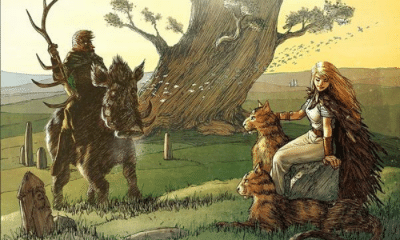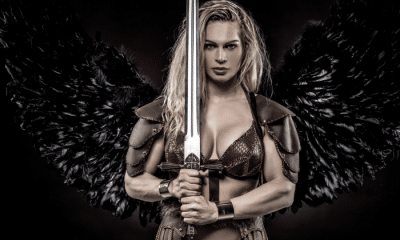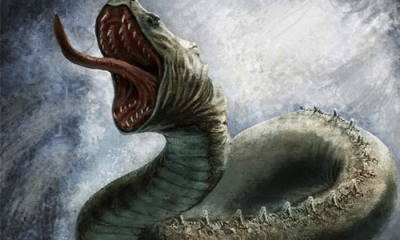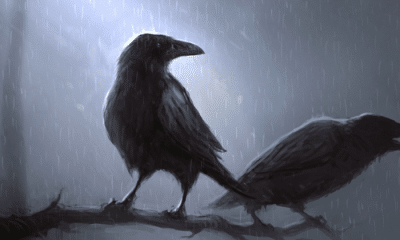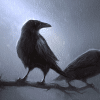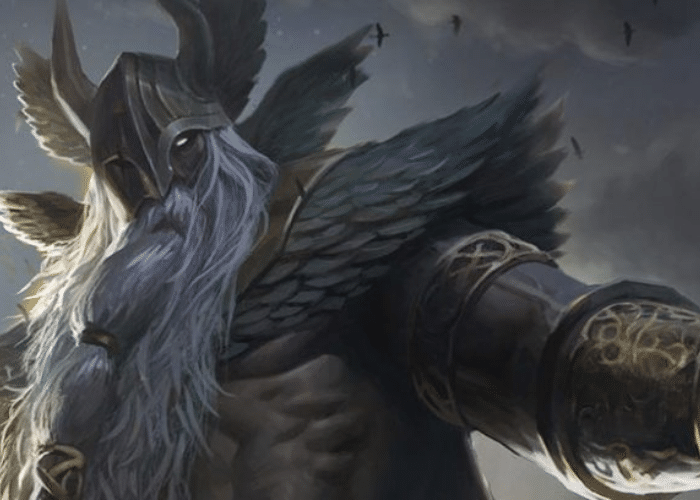
Norse
Why Is Odin One-Eyed?
Why Is Odin One-Eyed?
Odin, the chief god of the Norse pantheon, is usually shown with one eye. If you have ever wondered why this was, keep reading to find out!
While many cultures depicted their gods as physically perfect, it was not unusual for one or two members of a pantheon to have some type of physical disability or disfiguration. Among the beautiful Greek gods, for example, Hephaestus was notable for being lame.
The Norse pantheon had more than one god with an imperfect trait. Hod was blind and Tyr had lost his hand to Fenrir.
The Aesir gods were noteworthy, however, in that their leader was one of the gods with a prominent physical difference. Odin, the All-Father and chief of the Aesir, was missing an eye.
This was not the result of an accident, however. Odin deliberately sacrificed his eye and would later go on to make even greater sacrifices.
What could compel the leader of the gods to make such a sacrifice? Like much of what Odin did, it was all in the pursuit of a very specific type of information.
How Odin Lost His Eye
In Norse myths, Odin was on a constant quest for knowledge.
The chief of the Aesir was a warrior god, but he was also a god of wisdom, poetry, and magic. Many of his most well-known myths involve his search for more information and secrets.
One of the places Odin went to learn more was to visit the god Mímir.
Mímir had once lived among the Aesir and was Odin’s most trusted advisor. At the end of the war between the Aesir and Vanir gods, however, Mímir was sent to Vanaheim when they exchanged hostages.
Mímir had accompanied Hoenir, who the Vanir had made their chief as soon as he arrived. Although Mímir gave Hoenir excellent advice, the Vanir failed to see this and thought they had been cheated.
The gods of Vanaheim cut off Mímir’s head and sent it back to Asgard. His body was never found, but Odin and Freyja were able to preserve the head and revive it.
For a time, Odin carried Mímir’s head with him and the bodiless god gave him excellent advice. Eventually, however, Mímir would need a permanent home.
Odin placed the head next to a well that came to be called Mímisbrunnr, The Well of Mímir. It was also called the Well of Knowledge.
The well was one of three that fed the roots of Yggdrasil, the World Tree. According to some sources, the well lay in Asgard and Odin ensured that only he had access to it. Others, however, said that it was in Jötunheim.
It’s unclear whether the well was already imbued with magical properties or whether it took on its magic because of Mímir’s presence, but the water was remarkable. A single sip would give the person who drank knowledge that had been lost to mankind and the gods.
Each day, Mímir drank a horn of this magical water. He would never allow anyone else to touch it, however.
Odin went to visit Mímir often, especially in times of trouble. The god’s head provided the same sage advice he had in life, so Odin benefitted from his wisdom.
Always seeking to learn more, however, Odin desired a drink from the well. Eventually, Mímir granted this wish, but told Odin that a sacrifice had to be given to earn such knowledge.
Odin pulled out one of his own eyes and threw it into the well. His sacrifice accepted, he was allowed to take a drink and absorb its secrets.
From that day on, Odin was missing an eye. A commonly-used name for him was Hoárr, One-Eyed.
My Modern Interpretation
The loss of his eye was Odin’s first great sacrifice of himself in his pursuit of knowledge. He would eventually hang from Yggdrasil for nine days in an even more dramatic sacrificial act.
When Odin was hanged, he learned the runes and how to use them in magic. Surviving sources, however, do not tell us what secrets he learned from Mímir’s Well.
Scholars have had to interpret the story for themselves to theorize what Odin’s eye might have won him.
One of the first clues as to what Odin gained comes from Mímir’s name. While it cannot be traced directly to an Old Norse word, linguists believe that it can be traced to the same root as the English word “memory.”
The knowledge that Mímir and his well contained can therefore be interpreted as something to be remembered rather than as something to be discovered for the first time.
In addition, Odin usually searched for a very specific type of knowledge. He was most interested in magic.
When Odin hanged himself as a sacrifice, it was to learn the runes. These were not only practical as a writing system, but also had magical properties.
He also stole the Mead of Poetry. This was a source of inspiration for skalds, but may have also inspired the chants and songs that accompanied magical incantations and charms.
In another story, he was said to have learned specific magical songs from a brother of Bestla, his mother. This brother is sometimes interpreted as Mímir.
It seems likely, therefore, that the knowledge Odin sought was magical in nature.
This is also in keeping with idea that a sacrifice had to be made for Odin to gain this knowledge.
In the Norse World, sacrifices were not only offered to please the gods. They could also form something of a conduit between the gods and humanity.
The stories of Odin’s search for knowledge are often interpreted as representative of a shamanic ritual in which a priest or petitioner would offer something to the gods in exchange for hidden knowledge.
Such rituals were performed by cultures around the world and, although they took many forms, they often included entry into a state of ecstasy or a trance. Hallucinogens or other intoxicants were sometimes used to allow those taking part to peer into other realms or see hidden magic.
Odin drinking from Mímisbrunnr seems to be in keeping with this type of ritual. A sacrifice, his eye, is given. The ritual is overseen by one who has already been initiated into the practice. And, while the Well of Knowledge contained water, drinking from the horn may reflect the use of an intoxicating substance.
The loss of Odin’s eye was a permanent sacrifice. The fact that it was something very visible in his imagery not only made him identifiable, it was also a constant reminder to those who viewed those images of what their god had done and why.
It may have also indicated that Odin was still learning.
Many types of ancient magic, particularly divination, involved looking into some type of reflective surface. Before the use of the crystal balls that modern people are familiar with, a pool of water often provided such a surface.
By leaving his eye in the Well of Knowledge, Odin had a lasting connection to it. If Mímir looked into the water to perform divination magic, Odin’s eye was there are well.
The sacrifice of Odin’s eye could mean that he was still receiving knowledge long after he drank the well’s water. His sight was always on the well so it could continue revealing is secrets to him.
Taken together, it seems as though this story is one in which Odin sacrifices his eye in a shamanistic ritual to gain knowledge of something, probably a type of magic, that had been lost.
In Summary
In Norse legends and art, Odin is known for having one eye. His missing eye is one of his defining attributes.
Odin gave up his eye willingly as a sacrifice. He threw it into the Well of Knowledge on the order of Mímir, the head that guarded it.
This sacrifice earned Odin a drink from the well. By taking in its water, Odin gained the knowledge that the well contained.
The nature of this knowledge, however, was not made clear. Modern historians have interpreted it based on the context of the story and others like it.
Mímir was likely a god of memory, so if the well had his power it would have contained a type of knowledge that had been lost over time.
Odin typically sought knowledge of magic. In another story, he spent nine days hanging as a human sacrifice to learn the runes and their applications in magic.
Mímir’s Well probably contained similar magical knowledge. Odin sacrificed part of himself in a way that mimicked shamanic rituals.
In leaving his eye in the well, Odin also always had his sight on the source of this magical knowledge. Because water was one of the reflective surfaces used in some types of magic, this may have allowed him to continue learning more when his body was not at present.


